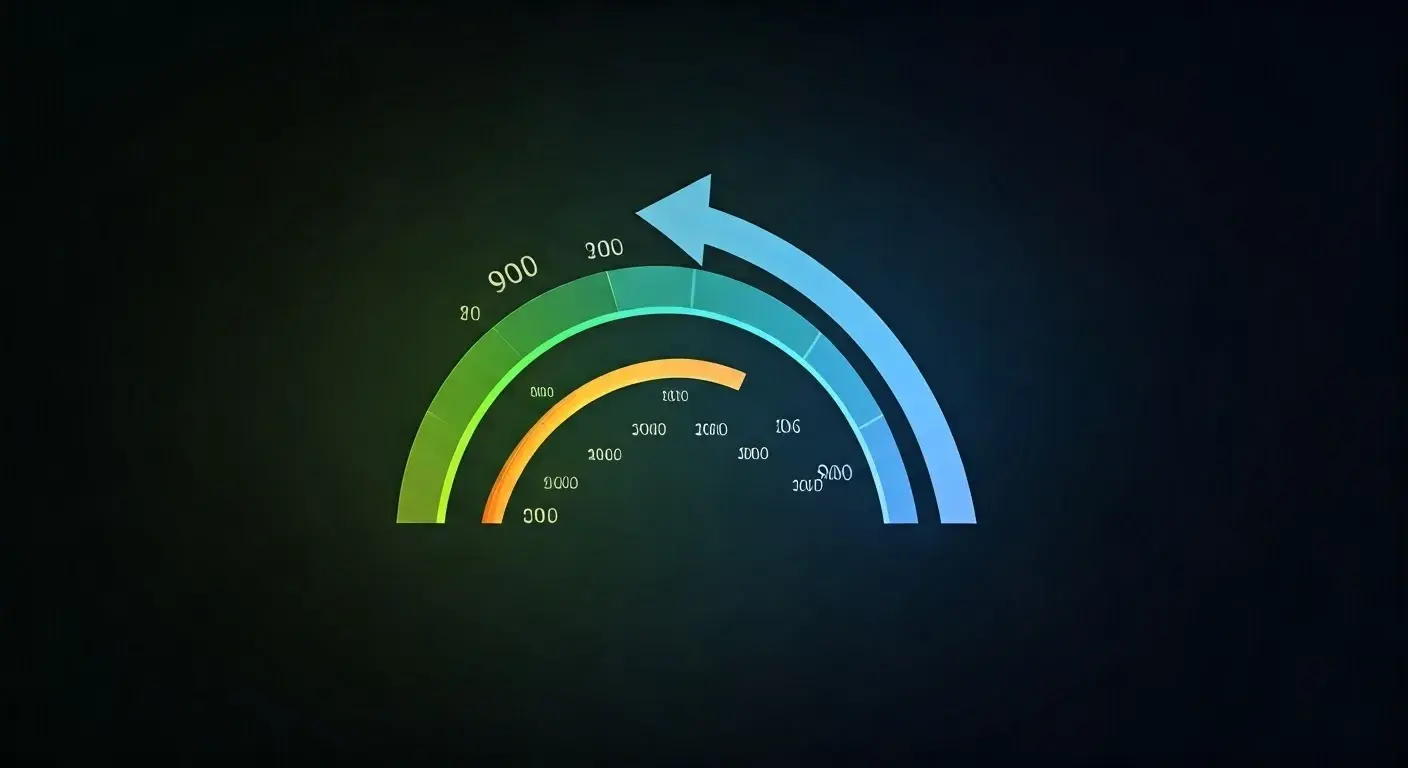-
Posted on: 01 Aug 2024
-
Understanding your credit score is crucial for navigating the world of finance. It's a key factor in securing loans, mortgages, credit cards, and even influencing things like insurance rates and apartment rentals. But what exactly is a "good" credit score, and where does the average American stand? This article dives into the average credit score in the United States, explains what it means, and offers guidance on how to improve your own creditworthiness.
Understanding Credit Scores
Before we delve into the average, let's clarify what a credit score represents. A credit score is a three-digit number that summarizes your credit history and predicts your likelihood of repaying debts. It's based on information in your credit report, which is maintained by credit bureaus.
Different Credit Scoring Models
There isn't just one single credit score. Different credit scoring models exist, but the two most commonly used are:
- FICO Score: Developed by Fair Isaac Corporation, the FICO score is the most widely used credit scoring model by lenders. It’s updated regularly to remain predictive.
- VantageScore: Created by the three major credit bureaus (Equifax, Experian, and TransUnion), VantageScore aims to be more accessible and inclusive, potentially scoring individuals with limited credit history.
While both models serve the same purpose, they use slightly different algorithms and weight different factors. Therefore, your FICO score and VantageScore might not be identical.
Credit Score Ranges and Their Meaning
Both FICO and VantageScore have similar scoring ranges:
- Poor Credit (300-579): Indicates a high risk to lenders. Securing credit will be difficult and expensive.
- Fair Credit (580-669): Below average and may limit your credit options. Higher interest rates are common.
- Good Credit (670-739): Considered a solid credit profile. Qualifying for loans and credit cards becomes easier with decent interest rates.
- Very Good Credit (740-799): Demonstrates a strong ability to manage credit responsibly. Access to better terms and lower interest rates is generally available.
- Excellent Credit (800-850): Represents exceptional creditworthiness. You'll have access to the best interest rates and terms on loans and credit cards.
The Average Credit Score in the US: A Snapshot
The average credit score in the United States fluctuates slightly over time, reflecting broader economic trends and consumer behavior. Tracking these averages provides a benchmark for understanding where you stand and assessing the overall financial health of the population.
Current Average FICO Score
As of late 2023 and early 2024, the average FICO score in the United States hovers around 715. This falls within the "Good" credit score range, indicating that a significant portion of Americans maintain responsible credit habits.
Current Average VantageScore
The average VantageScore is slightly different due to the different scoring model. It typically ranges a little lower than the FICO score. It's often around 690 - 700, which is in the "Fair to Good" range.
Factors Influencing the Average
Several factors can influence the average credit score in the US, including:
- Economic conditions: Recessions or periods of high unemployment can lead to increased delinquencies and lower credit scores.
- Consumer spending and debt levels: Increased borrowing and high debt-to-income ratios can negatively impact credit scores.
- Government policies and regulations: Changes in lending practices or credit reporting requirements can affect credit score averages.
- Financial literacy and education: A better understanding of credit management can lead to improved credit scores.
Factors Affecting Your Credit Score
Your credit score isn't determined randomly. It's based on several key factors, each carrying a different weight:
Payment History (35%)
This is the most important factor. Making on-time payments consistently is crucial for building and maintaining a good credit score. Late payments, even by a few days, can negatively impact your score. Missed payments can stay on your credit report for up to seven years.
Amounts Owed (30%)
Also known as credit utilization, this refers to the amount of credit you're using compared to your total available credit. Aim to keep your credit utilization below 30%. High credit utilization signals to lenders that you may be overextended and struggling to manage your debt.
Length of Credit History (15%)
A longer credit history generally translates to a better credit score. Lenders prefer to see a track record of responsible credit management over time. If you are just starting out, you may consider becoming an authorized user on a trusted family member's credit card to help build your credit history.
Credit Mix (10%)
Having a mix of different types of credit accounts (e.g., credit cards, installment loans, mortgages) can positively impact your score. It demonstrates your ability to manage different types of debt responsibly. However, it's important not to open accounts you don't need just to improve your credit mix.
New Credit (10%)
Opening too many new credit accounts in a short period can lower your score. Each new account generates a hard inquiry on your credit report, which can temporarily reduce your score. Lenders may also see it as a sign that you're taking on too much debt.
Why Your Credit Score Matters
A good credit score opens doors to various financial opportunities and advantages:
- Lower Interest Rates: With a higher credit score, you'll qualify for lower interest rates on loans, mortgages, and credit cards, saving you significant money over time.
- Higher Credit Limits: A good credit score increases your chances of getting approved for higher credit limits on your credit cards, providing you with greater purchasing power and flexibility.
- Easier Loan Approvals: Lenders are more likely to approve your loan applications if you have a good credit score, making it easier to finance large purchases like a car or a home.
- Better Insurance Rates: In some states, insurance companies use credit scores to determine premiums. A good credit score can translate to lower insurance rates on your car and home.
- Apartment Rentals: Landlords often check credit scores to assess a tenant's ability to pay rent. A good credit score can increase your chances of getting approved for your desired apartment.
- Employment Opportunities: Some employers check credit scores as part of the hiring process, particularly for positions involving financial responsibility.
How to Improve Your Credit Score
If your credit score isn't where you'd like it to be, don't despair. There are several steps you can take to improve it:
Pay Bills on Time
This is the most crucial step. Set up automatic payments or reminders to ensure you never miss a due date. Even one late payment can have a negative impact.
Lower Your Credit Utilization
Aim to keep your credit utilization below 30%. Pay down your credit card balances as much as possible each month. Consider requesting a credit limit increase from your credit card issuer, but only if you won't be tempted to spend more.
Review Your Credit Report Regularly
Check your credit reports from all three major credit bureaus (Equifax, Experian, and TransUnion) at least once a year. You can access them for free at AnnualCreditReport.com. Look for any errors or inaccuracies and dispute them immediately.
Become an Authorized User
If you have limited or no credit history, consider becoming an authorized user on a responsible friend or family member's credit card. Their positive credit history will be reflected on your credit report, helping you build credit.
Avoid Opening Too Many New Accounts
Resist the urge to open multiple credit accounts at once. Each new account can lower your score, especially if you have a limited credit history.
Consider a Secured Credit Card
If you have poor credit or no credit, a secured credit card can be a good option. You'll deposit a sum of money as collateral, which will serve as your credit limit. Using the card responsibly and making on-time payments can help you build credit.
Be Patient
Improving your credit score takes time and consistent effort. There are no quick fixes or shortcuts. Stick to your plan, and you'll gradually see your score improve.
Staying Informed and Proactive
Your credit score is a dynamic number that reflects your financial habits and behavior. Staying informed about credit scoring models, understanding the factors that influence your score, and taking proactive steps to manage your credit responsibly are essential for achieving your financial goals. Don't be discouraged by temporary setbacks; focus on building positive credit habits over time, and you'll be well on your way to establishing a strong credit profile.











